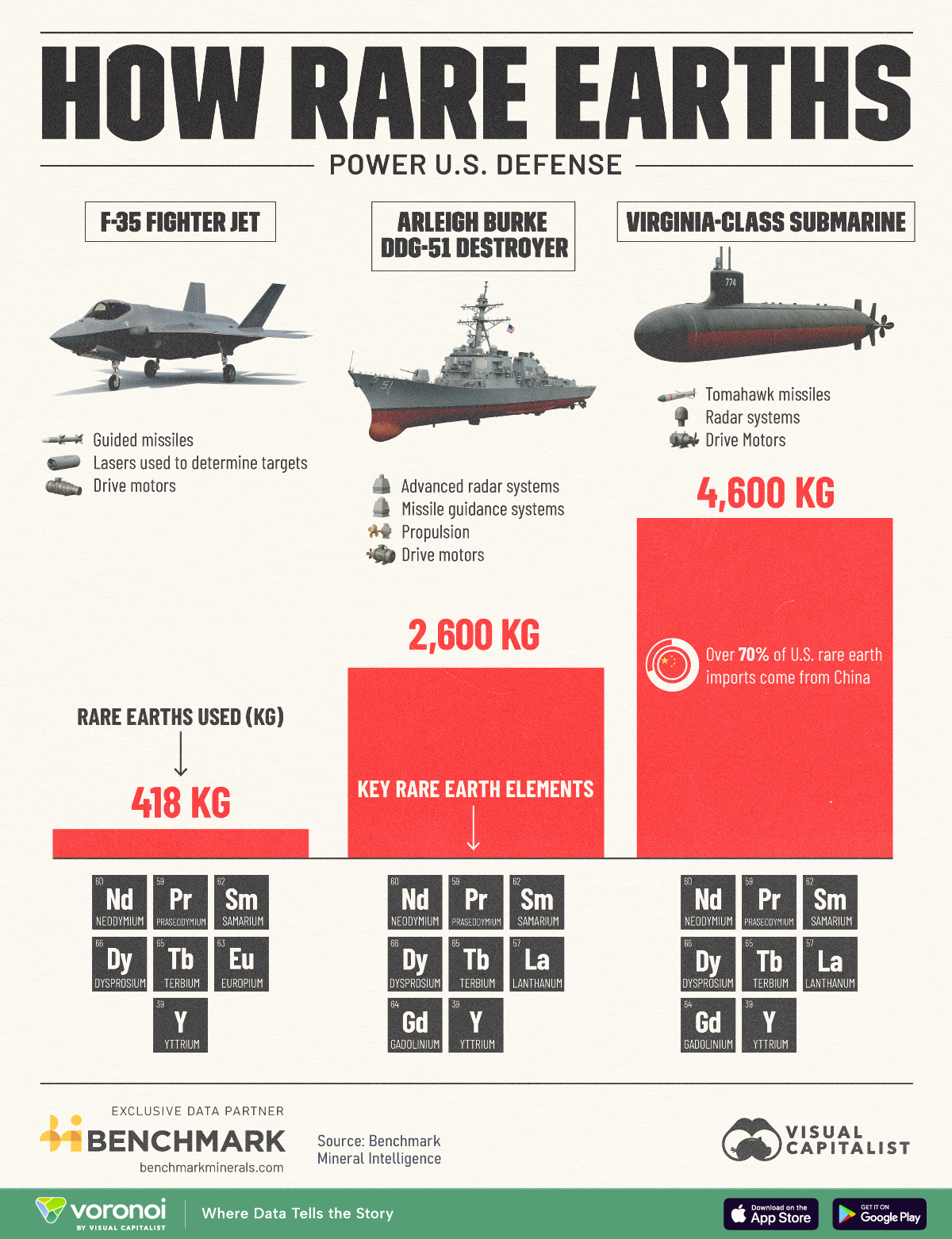![]()
See this visualization first on the Voronoi app.

Use This Visualization
How Rare Earths Power U.S. Defense
This was originally posted on our Voronoi app. Download the app for free on iOS or Android and discover incredible data-driven charts from a variety of trusted sources.
Key Takeaways
- U.S. military platforms like the Virginia-class submarine and Arleigh Burke destroyer require thousands of kilograms of rare earth elements (REEs).
- F-35 Fighter jets alone use over 400 kg of REEs, essential for weapons targeting systems, lasers, and other advanced onboard technologies.
Rare earth elements (REEs) are essential components of advanced military technology. From fighter jets to submarines, these critical minerals power key systems that give the U.S. military a strategic edge.
This infographic explores the quantities of REEs used in major U.S. defense platforms and highlights their specific applications in modern warfare.
It reveals how different military equipment relies on rare earths not just in bulk, but for highly specialized roles, from laser-guided weapons to stealth capabilities.
The data for this visualization comes from Benchmark Mineral Intelligence.
Rare Earths in the F-35 Fighter Jet
The F-35 Lightning II requires around 418 kg of REEs per unit. These materials are used in advanced weapons targeting systems, radar, and laser technologies. Elements like neodymium and praseodymium are especially important in the permanent magnets that support flight control and stealth functions.
| Equipment | REEs (kg) | Application Examples |
|---|---|---|
| F-35 Fighter Jet | 418 kg | Guided missiles, Lasers used to determine targets |
| Arleigh Burke DDG-51 Destroyer | 2600 kg | Advanced radar systems, Missile guidance systems, Propulsion |
| Virginia-Class Submarine | 4600 kg | Tomahawk missiles, Radar systems, Drive Motors |
Massive Demand from Naval Platforms
The Arleigh Burke-class destroyer and Virginia-class submarine are two of the U.S. Navy’s most sophisticated vessels. The destroyer uses about 2,600 kg of REEs, while the submarine demands a whopping 4,600 kg. These elements support radar, sonar, missile guidance, and propulsion systems critical for both offensive and defensive missions.
China’s Dominance in REE Supply
While these elements are crucial to U.S. defense, more than 70% of REE imports come from China. This dependence on a single geopolitical rival has raised strategic concerns in Washington, with the Trump administration making efforts to diversify supply chains and boost domestic production.
Learn More on the Voronoi App ![]()
If you enjoyed today’s post, check out Charted: Where the U.S. Gets Its Rare Earths From on Voronoi, the new app from Visual Capitalist.